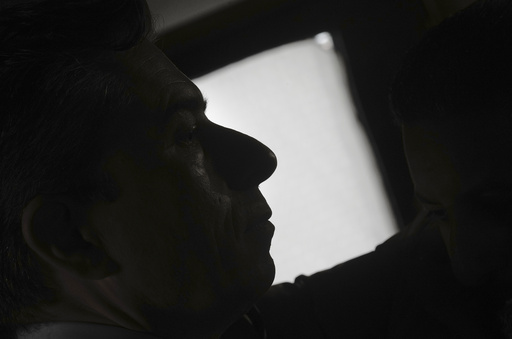CAIRO — The risk of famine in Gaza has been largely mitigated with the influx of humanitarian aid during a fragile ceasefire, according to the United Nations humanitarian chief. However, he cautioned that the threat could quickly resurface if the truce collapses.
Tom Fletcher made these remarks during a recent visit to Gaza, where hundreds of trucks delivering humanitarian assistance have arrived daily since the ceasefire began on January 19. “The threat of famine, I think, is largely averted,” Fletcher stated from Cairo. “Those starvation levels are down from where they were before the ceasefire.”
As the ceasefire enters its second phase, concerns are rising over its potential extension, with negotiations set to address more complex issues. The initial six-week phase is currently at its midpoint.
Under the ceasefire agreement, Israel committed to permitting 600 aid trucks to enter Gaza daily, a significant increase after previous delays and security issues hampered the delivery and distribution of crucial supplies like food and medicine. Since the ceasefire began, over 12,600 aid trucks have entered the territory, according to the U.N. humanitarian office.
Fletcher called on both Hamas, which resumed its control shortly after the ceasefire took effect, and Israel to adhere to the agreement that has “saved so many lives.” He remarked on the ongoing dire conditions, emphasizing that many people remain hungry. “If the ceasefire falls, if the ceasefire breaks, then very quickly those (famine-like) conditions will come back again,” he warned.
The internationally recognized threshold for famine is two or more deaths per day per 10,000 people. Prior to the ceasefire, various food security monitors and U.N. officials had expressed concerns about possible famine in parts of devastated Gaza, particularly in the north, which had been largely cut off since the onset of the 16-month conflict. The ceasefire has allowed hundreds of thousands of Palestinians to return to their homes in the north.
Cindy McCain, the American head of the U.N. World Food Program, emphasized the urgent need to prevent starvation, stating, “We can’t … sit by and just allow these people to starve to death.” The Biden administration has consistently urged Israel to facilitate more aid deliveries, cautioning that failure to comply could result in U.S. military support restrictions.
Fletcher stressed the critical need for additional food and medical supplies for the more than 2 million people in Gaza, most of whom are displaced. He also raised concerns about potential disease outbreaks stemming from a lack of essential health supplies and called for an expedited provision of tents and other shelters to those returning to their home regions as winter approaches. “We must get tens of thousands of tents very rapidly in, so that people who are moving back, particularly moving back into the north, are able to take shelter from those conditions,” he said.
Entering Gaza through the Erez crossing, Fletcher described the destruction he witnessed, noting he traveled through areas that were “bombed-out, flattened and pulverized.” He remarked, “You can’t see the difference between a school or a hospital or a home,” referring specifically to the northern regions.
He recounted seeing people searching for their homes amid the rubble and collecting the remains of loved ones. “It is a horror movie. It’s a horror show,” he said. “It breaks your heart again and again and again. You drive for miles and miles and miles, and this is all you see.”
Fletcher acknowledged the pervasive anger among some Palestinians toward the international community regarding the conflict and its aftermath. “There was despair and anger. And I can understand the anger at the world that this has happened to them,” he reflected. “But there was also a sense of defiance as well. People were saying, ‘We will go back to our homes. We will go back to the places that we have lived for generations, and we will rebuild.’”



